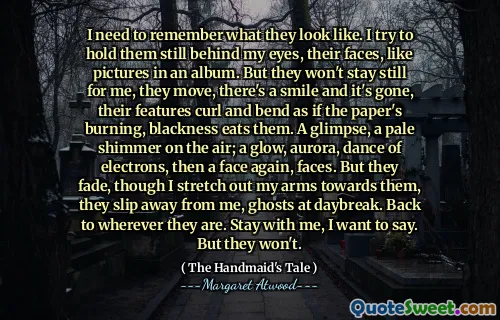The newspaper stories were like dreams to us, bad dreams dreamt by others. How awful, we would say, and they were, but they were awful without being believable. They were too melodramatic, they had a dimension that was not the dimension of our lives. We were the people who were not in the papers. We lived in the blank white spaces at the edges of print. It gave us more freedom. We lived in the gaps between the stories.
The characters in "The Handmaid's Tale" perceive newspaper stories as nightmarish visions created by others, which feel detached from their reality. They recognize the grim nature of these stories but find them hard to believe due to their exaggerated nature. This stark comparison highlights a sense of disconnection, as the characters see themselves living outside the narratives presented to the public. They feel like they exist in a world overlooked by media, representing a life that is both ordinary and unremarkable.
This sense of living in the "blank white spaces" between dramatic tales allows the characters a kind of freedom that those in the headlines do not experience. Their lives reflect a reality devoid of melodrama, where their experiences may not be acknowledged but still hold significant value. By dwelling in the unseen areas of society, they carve out an existence that, while unrecognized, is rich with their truths, making them resilient in the face of overwhelming stories that do not fully capture their lives.






